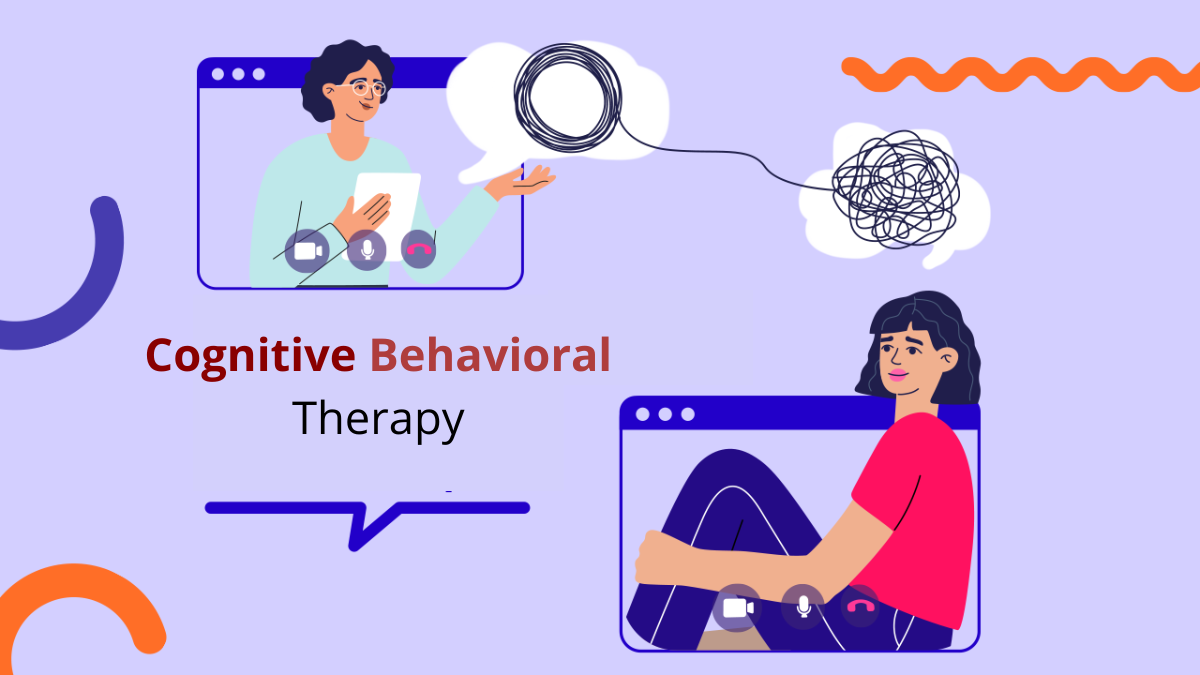Cognitive Behavioral Therapy 3
Cognitive Behavioral Therapy 3
Week 5 Discussion Post: Cognitive Behavioral Therapy: Comparing Group, Family, And Individual Settings

How the use of CBT in groups compares to its use in family or individual settings
Cognitive behavioral therapy (CBT) is a psychosocial treatment that improves impaired thinking and behavior patterns. CBT treats various mental health diseases, including depression, anxiety disorders, alcohol and substance use, eating disorders, and marital issues. According to Guo et al. (2021), CBT significantly improves functioning and quality of life by helping individuals identify and acknowledge thinking and behavior distortions, understand behaviors and motivations better, learn problem-solving skills to address the distortions, and bolster confidence in their abilities. CBT is applicable in individual, group, and family settings.
Cognitive-behavioral group therapy is a group approach adopting behavioral, cognitive, relational, and group strategies and procedures to improve the coping skills of group members and enhance the relational and interpersonal issues that participants are experiencing. CBT in group settings involves a practitioner or various practitioners offering therapy to several individuals with common goals and issues and seeking mutual reinforcement. The practitioner is responsible for guiding and managing group processes, including setting engagement rules, setting expectations, objectives, and icebreakers, managing interpersonal dynamics, and ensuring the success of group CBT (Guo et al., 2021). Managing interpersonal dynamics is imperative to successful group processes because group members differ in personalities, attitudes, goals, characters, and perceptions. These differences can be a barrier to a successful group or an opportunity to learn from each other. Per Guo et al. (2021), compared to individual CBT, group CBT is more effective in treating conditions like anxiety and drug and alcohol abuse because it enhances opportunities for mutual support, normalization, positive peer modeling, exposure to different situations and perceptions, and reinforcement.
(Cognitive Behavioral Therapy 3)
CBT in family settings involves a practitioner or practitioners providing psychotherapy to family members designed to improve family dynamics and relationship building. When applied in family settings, CBT evaluates interactional dynamics in the family and their contribution to family functioning and dysfunction (Pagsberg et al., 2022). The therapist engages family members to highlight problems in emotions, beliefs, and behavioral exchanges and how they can be addressed to improve interaction and family dynamics. Cognitive behavioral therapy is often applied in individual settings involving a practitioner working with a single patient. CBT for individuals focuses on personal development and is appreciated by those seeking interaction at a personal level and a high degree of attention (Guo et al., 2021). The therapist works with the client on their personal goals, and the client’s needs and preferences guide decision-making and patient care. The practitioners select an approach that best suits the client and contributes to personal development. The treatment plan is tailored to the client’s needs and depends on what strategies are effective in different situations. Guo et al. (2021) compared individual CBT to group CBT and found that individual CBT expands opportunities for treatment individualizations and addressing a client’s specific needs. It is also more effective for conditions like avoidant behavior and conduct disorder.
Challenges PMHNPs might encounter when using CBT in group settings
Implementing CBT in group settings can be challenging, particularly due to individual differences and conflicting goals and needs. Common problems include the emergence of sub-groups attributed to individual differences like race and ethnicity and high dropout rates when individuals feel their needs are not adequately addressed, or the process is no longer beneficial (Rasmussen et al., 2021). People with a desire for individual attention can be problematic in group settings. It is also unsuitable for persons with social anxiety or fear of shame and humiliation despite it being used in some cases to improve social skills and self-confidence by encouraging social interactions and the development of interpersonal skills.
(Cognitive Behavioral Therapy 3)
Why Sources are Scholarly
Selected sources to support the discussion include Rasmussen et al. (2021), Guo et al. (2021), and Pagsberg et al. (2022). These sources are peer-reviewed and scholarly and obtained from the PubMed database. Authors have the background knowledge to address the discussion topic, and they are affiliated with professional and academic institutions, including the Department of Psychiatry, The First Affiliated Hospital of Chongqing Medical University, Chongqing, China, Department of Clinical Medicine, Faculty of Health and Medical Sciences, University of Copenhagen, Copenhagen, Denmark, Child and Adolescent Mental Health Center, Copenhagen University Hospital – Mental Health Services CPH, Gentofte Hospitalsvej 3A, 1. sal, 2900 Hellerup, Copenhagen, Denmark, and Regional Centre for Child and Youth Mental Health and Child Welfare, Faculty of Health Sciences, UiT the Arctic University of Norway, Tromsø, Norway. These attributes give the authors authority to research the topic and make the sources scholarly.
References
Guo, T., Su, J., Hu, J., Aalberg, M., Zhu, Y., Teng, T., & Zhou, X. (2021). Individual vs. Group Cognitive Behavior Therapy for Anxiety Disorder in Children and Adolescents: A Meta-Analysis of Randomized Controlled Trials. Frontiers in psychiatry, 12, 674267. https://doi.org/10.3389/fpsyt.2021.674267
Pagsberg, A. K., Uhre, C., Uhre, V., Pretzmann, L., Christensen, S. H., Thoustrup, C., Clemmesen, I., Gudmandsen, A. A., Korsbjerg, N. L. J., Mora-Jensen, A. C., Ritter, M., Thorsen, E. D., Halberg, K. S. V., Bugge, B., Staal, N., Ingstrup, H. K., Moltke, B. B., Kloster, A. M., Zoega, P. J., Mikkelsen, M. S., … Plessen, K. J. (2022). Family-based cognitive behavioural therapy versus family-based relaxation therapy for obsessive-compulsive disorder in children and adolescents: protocol for a randomised clinical trial (the TECTO trial). BMC psychiatry, 22(1), 204. https://doi.org/10.1186/s12888-021-03669-2
Rasmussen, L. P., Patras, J., Handegård, B. H., Neumer, S. P., Martinsen, K. D., Adolfsen, F., Sund, A. M., & Martinussen, M. (2021). Evaluating Delivery of a CBT-Based Group Intervention for Schoolchildren With Emotional Problems: Examining the Reliability and Applicability of a Video-Based Adherence and Competence Measure. Frontiers in psychology, 12, 702565. https://doi.org/10.3389/fpsyg.2021.702565



